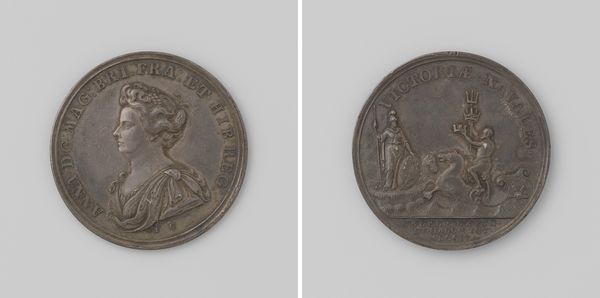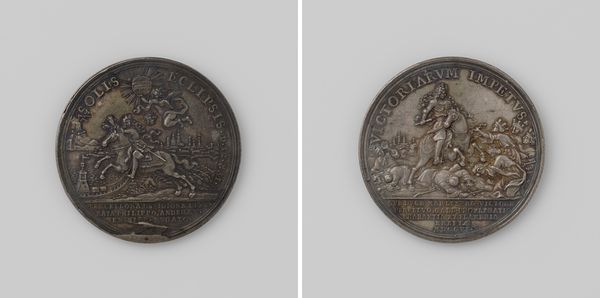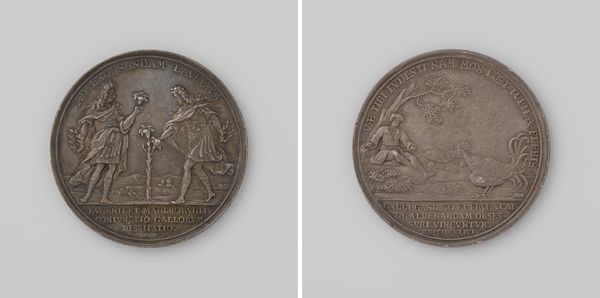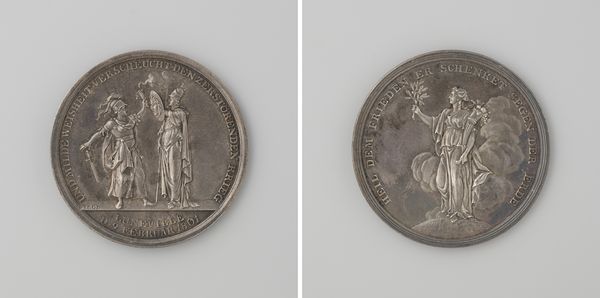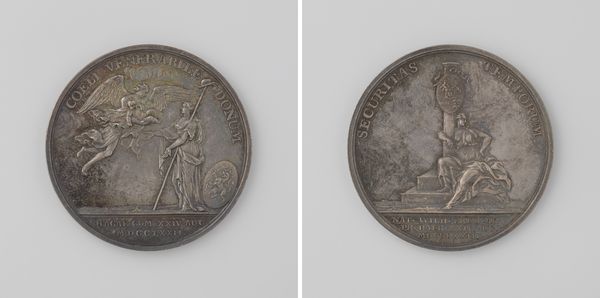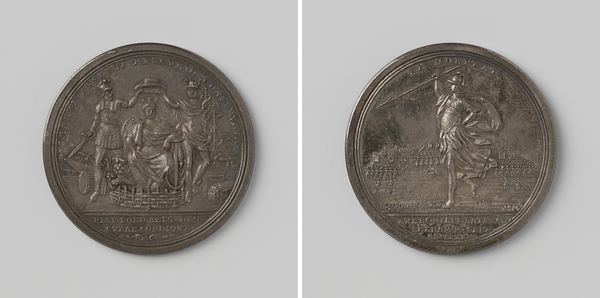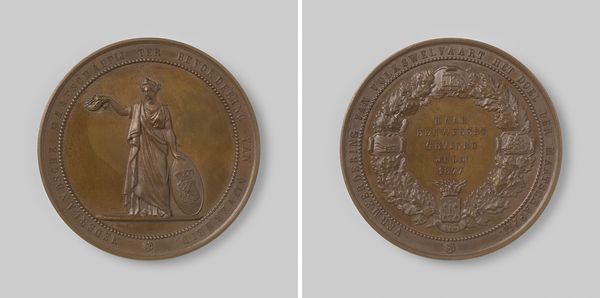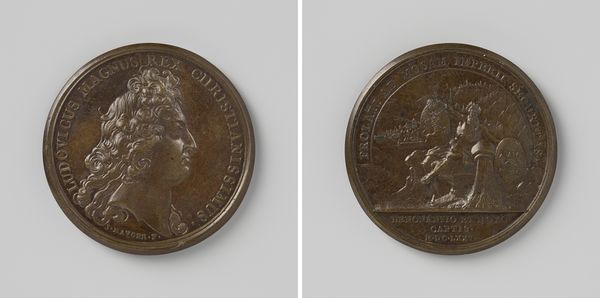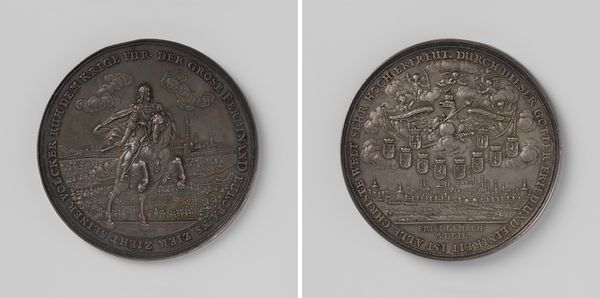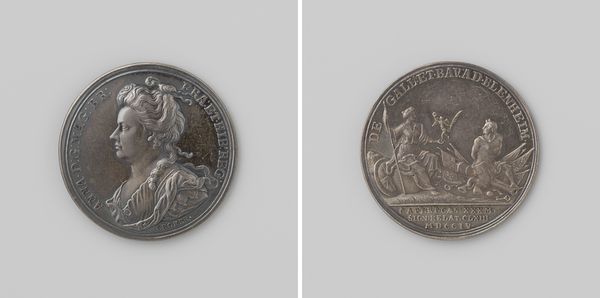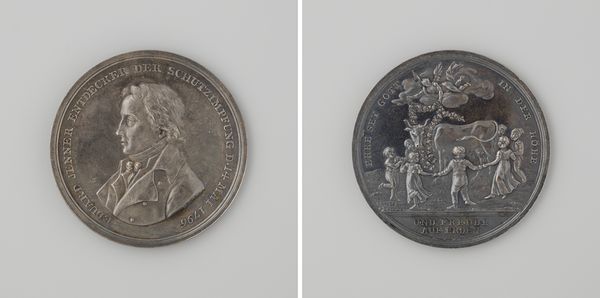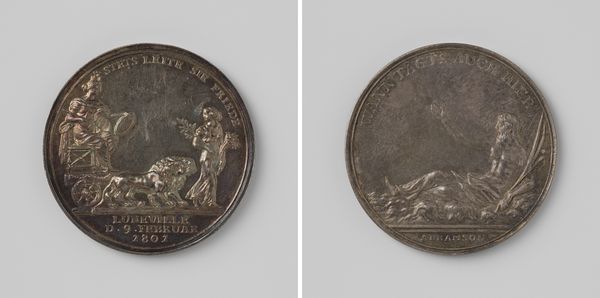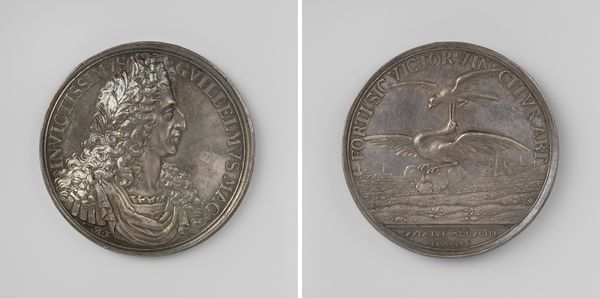
Viering te Berlijn van de tweede vrede van Parijs tussen Frankrijk en de geallieerden 1815
0:00
0:00
metal, sculpture, engraving
#
neoclacissism
#
narrative-art
#
metal
#
stone
#
sculpture
#
sculptural image
#
sculpture
#
history-painting
#
engraving
#
statue
Dimensions: diameter 3.6 cm, weight 13.74 gr
Copyright: Rijks Museum: Open Domain
Curator: I am struck by the sharp contrasts, the raised figures, and the clean, precise lettering that encircles these images. It creates a very ordered, almost rigid, presentation. Editor: You’re right, it’s all very deliberate. What we’re looking at is a medal created by Daniel Friedrich Loos in 1815. The medal commemorates the signing of the second Treaty of Paris which marked the end of the Napoleonic Wars. It is crafted from metal, a common material for medals designed for wide circulation. Curator: Knowing its context, the imagery makes complete sense. The figure with the olive branch, she must represent Peace, dispensing blessings upon the world. It speaks volumes about the aspirations of the era, a longing for stability and renewed prosperity after so much conflict. It shows just how art was deployed as propaganda to rally the citizens. Editor: Precisely. And turning to the other side, we see Athena and other allegorical figures vanquishing war and destruction, ushering in a new age. Notice how the composition divides the narrative – the treaty on one side, the consequences of it on the other. What strikes you about the artist’s choices here? Curator: Well, Loos certainly leaned into the Neoclassical aesthetic popular at the time. The figures are idealized, almost statuesque in their form, recalling Greek and Roman sculpture. The engraving, although small in scale, attempts to convey grand narratives, much like history paintings do on a large canvas. Editor: True, the scale works against it. The figures and text appear quite compressed; one might argue Loos had a challenge adapting that epic theme to fit this limited medium. Curator: Yet the density of the image also emphasizes the enormity of the event it commemorates, compressing that historic weight into a tangible object. The act of holding such a coin creates a palpable link to that moment in 1815. Editor: Yes, its symbolic importance certainly outweighs its material size. Thinking about how conflict and reconciliation shape societies and artistic expression, is really thought provoking. Curator: Indeed, Loos gives us more than just a snapshot of the past; he gives us a reminder that peace, like art, is often carefully constructed.
Comments
No comments
Be the first to comment and join the conversation on the ultimate creative platform.
